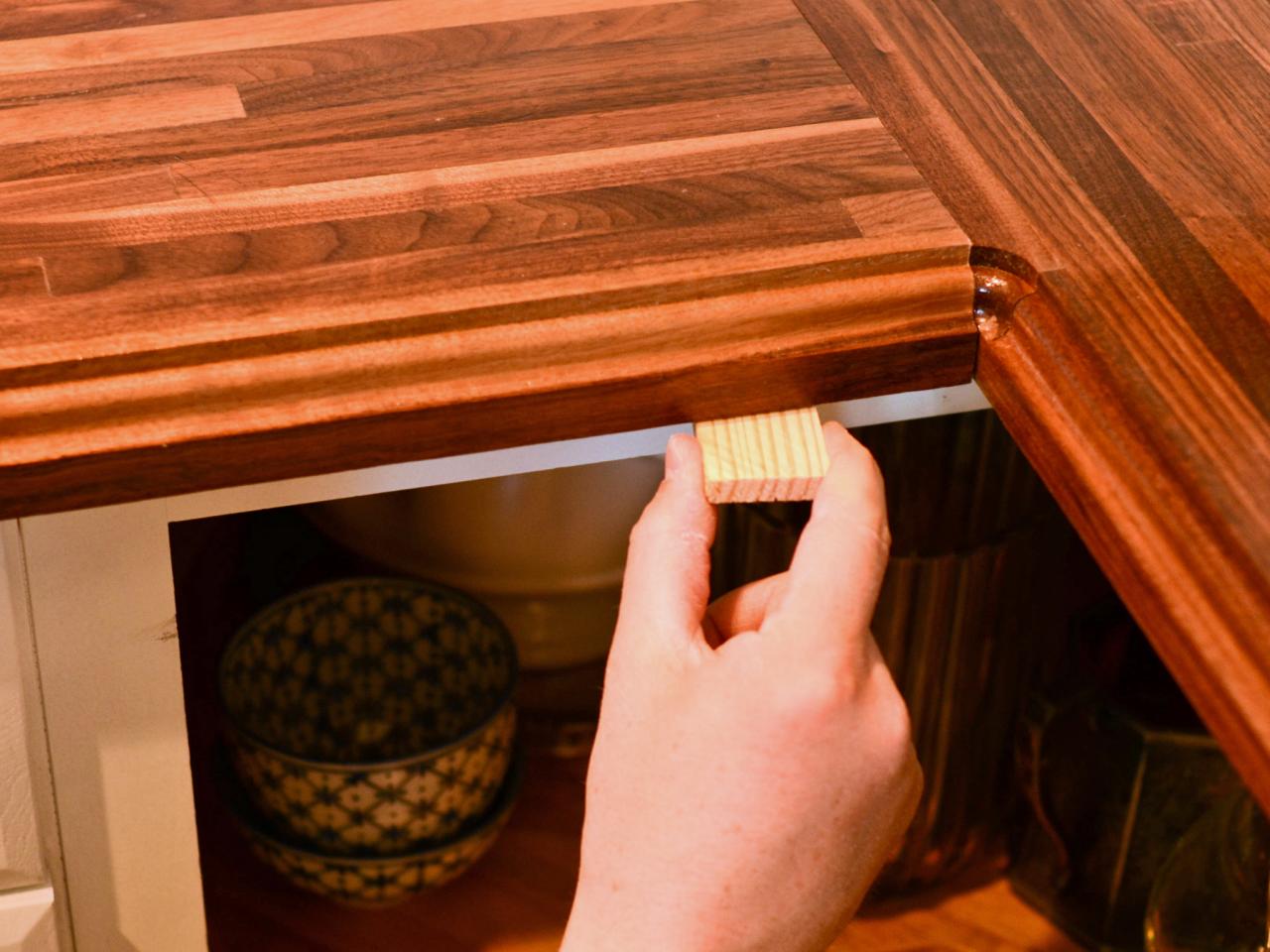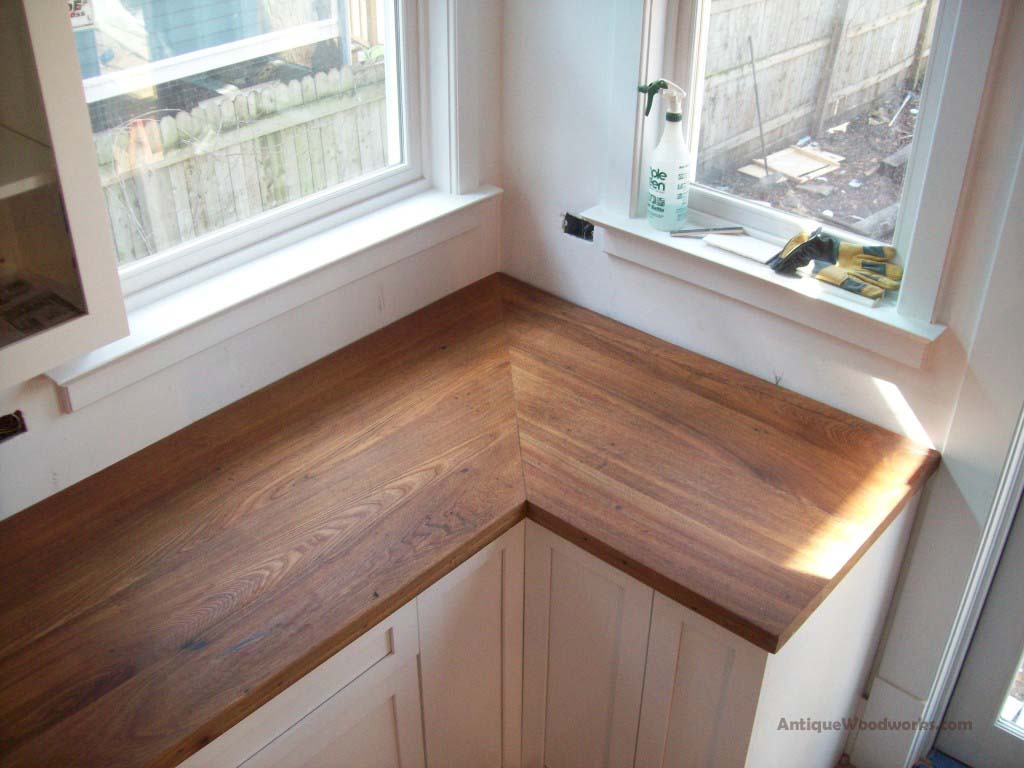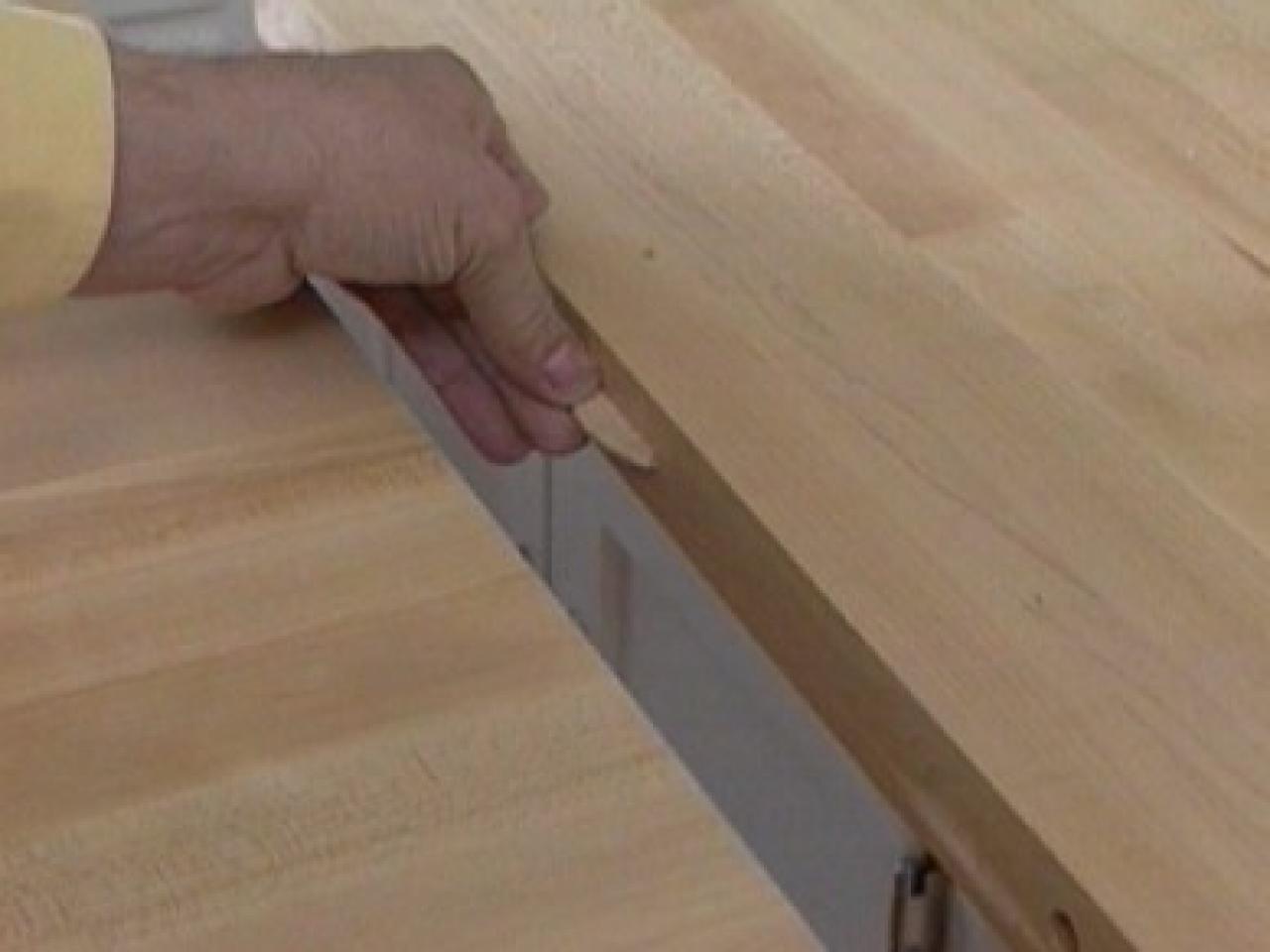When it comes to kitchen renovations, installing butcher block countertops in corners can be a practical and aesthetic challenge. Butcher block countertops are known for their natural beauty and durability, making them a popular choice for many homeowners. However, working with corners requires careful planning and execution to ensure a seamless and attractive finish. In this comprehensive discussion, we will delve into the considerations and steps involved in installing butcher block countertops in corners, providing you with a guide to tackle this specific aspect of your kitchen renovation project.
Measurements and Planning: Before you begin the installation, precise measurements are crucial. Measure the corner area carefully, taking into account any irregularities in the walls. Plan for the overhang and understand the dimensions of the butcher block countertops you intend to install.
Corner Connectors: In some cases, corner connectors or miter bolts may be necessary to join the two sections of the butcher block at the corner. These connectors ensure a strong and stable connection, preventing any gaps or misalignment.
Cutting the Butcher Block: Based on your measurements, you will likely need to cut the butcher block to fit the corner. A miter saw or circular saw is commonly used for this purpose. Ensure that your cuts are precise, so the two sections fit together seamlessly.

Seams and Joints: When installing the butcher block countertops in a corner, pay careful attention to the seams and joints. Apply wood glue to the cut edges and use clamps to hold the pieces together while the glue dries. This ensures a tight and secure bond.
Sanding and Finishing: After the butcher block is installed, sand the seams and edges to create a smooth, even surface. Finish the corners with the same treatments you apply to the rest of the countertops. This may include mineral oil, polyurethane, or another protective finish to enhance the wood’s durability and appearance.

Support Brackets: In corners, especially in larger kitchens or if you’re using a particularly heavy butcher block, it’s essential to include support brackets beneath the countertop to prevent sagging. These brackets can be concealed beneath the countertop, ensuring both support and a clean look.
Sealing Gaps: To prevent water and debris from getting into the seams and joints of the corner, it’s important to properly seal any gaps. You can use a food-grade silicone caulk for this purpose. Ensure it’s color-matched to the wood to maintain a seamless appearance.
Edge Profile Considerations: Pay attention to the edge profile of the butcher block in corners. This is especially important for visual continuity. Whether you choose a square edge, beveled edge, or another profile, make sure it aligns perfectly at the corner.
Maintenance and Care: After installation, it’s important to maintain your butcher block countertops regularly. Corners can be particularly susceptible to wear, so keep an eye on the corners for signs of damage or moisture penetration. Frequent applications of mineral oil can help maintain the wood’s integrity.
Finishing Touches: Finally, don’t forget the finishing touches. Consider using decorative corner brackets or trim to enhance the appearance and functionality of the corner area. These small details can add an extra layer of elegance to your kitchen.

Installing butcher block countertops in corners requires precision, planning, and attention to detail. Careful measurement, cutting, and bonding are essential for achieving a seamless and attractive result. Proper support, sealing of gaps, and edge profile consideration are equally important. When executed correctly, butcher block countertops can create a stunning and functional kitchen space, with corners that enhance the overall aesthetic appeal.
How To Install Butcher Block Countertops DIY Kitchen Remodel

Do-It-Yourself Butcher-Block Kitchen Countertop HGTV

Creative ideas for butcheru0027s block kitchen counters when thereu0027s a

Wood Countertop Corners – Antique Woodworks

Tips & Tricks on Installing Butcher Block Countertops – Sew Woodsy

How to Install a Butcher-Block Countertop how-tos DIY

Related articles:
- Butcher Block Countertops With White Cabinets
- Pine Butcher Block Countertops
- Butcher Block Countertops Walnut
- Maple Butcher Block Countertops
- Care Of Butcher Block Countertop
- Butcher Block Countertops Maintenance
- Antique Butcher Block Countertops
- Butcher Block Countertop Sealing
- Wood Butcher Block Countertop
- Thick Butcher Block Countertop
Installing Butcher Block Countertops in Corners
Adding a beautiful and elegant butcher block countertop to your kitchen is a great way to improve the look and feel of your space. But when it comes to installing them in the corner, there are some unique considerations you should be aware of. This article will provide you with all the information you need to install butcher block countertops in the corner of your kitchen.
Features
-Beautiful and durable hardwood construction
-Available in a variety of colors, textures, and grain patterns
-Easy to install and maintain
-Can be sealed for added protection
-Will last for many years
Benefits
-Creates an eye-catching focal point in any kitchen
-Adds value to your home
-Provides a warm and inviting workspace for cooking and entertaining
-Able to withstand wear and tear without needing frequent replacement
-Easy to clean and maintain
Pros and Cons
Pros:
-Beautiful, timeless look that won’t go out of style
-Strong and durable construction
Installation
-Easy to install with basic tools and materials
-No special skills or training necessary
Cons:
-Can be expensive compared to other countertop options
-Requires regular maintenance and sealing for optimal performance
Care and Maintenance
-Regularly clean with warm, soapy water or mild cleaner
-To maintain the finish, it’s important to apply mineral oil every 3 months or so
-Seamless installation is best for preventing water damage and staining in corners
Where to Buy
Butcher block countertops are available at most home improvement stores, as well as online retailers. Be sure to compare prices, materials, and installation options before making your purchase.
Common Questions and Answers About Installing Butcher Block Countertops in Corners
Q: What tools do I need for installation?
A: You will need a circular saw, drill, level, tape measure, jigsaw, chisel, hammer, clamps, wood glue, screws, sealant or mineral oil.
Q: How do I know if my countertop needs sealing?
A: If your countertop has been exposed to moisture or stains over time, it’s best to seal it. To test if it needs sealing, pour a few drops of water on the surface. If it beads up, it’s sealed. If not, it needs sealing.
Q: How much does installation cost?
A: Installation costs vary depending on the size of your countertop and the complexity of the job. Most contractors charge by the hour.